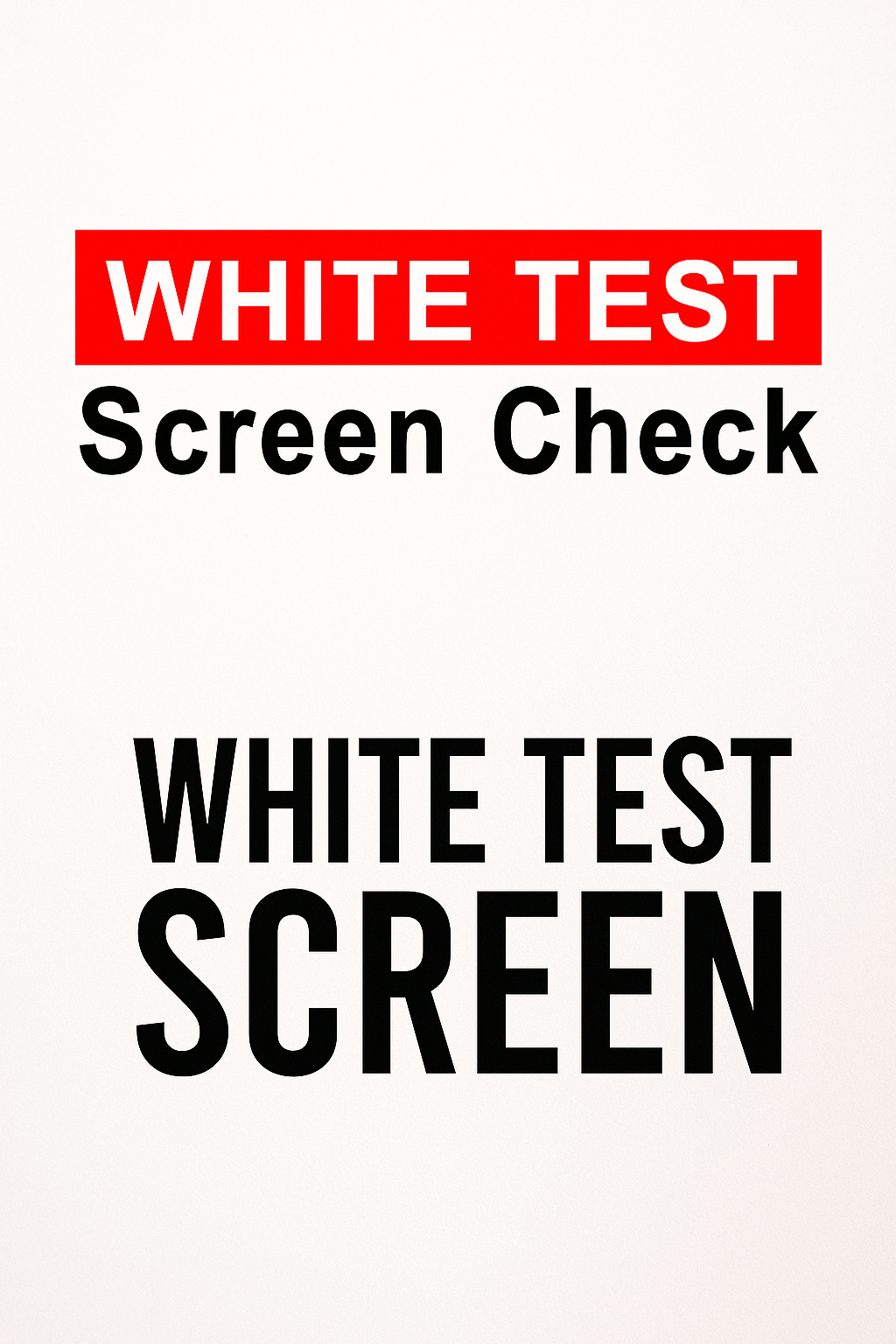In the world of technology, ensuring that devices function at their highest potential is critical for both personal and professional use. A simple yet highly effective method that has gained recognition in device performance evaluation is the white screen test.
Despite its apparent simplicity, displaying a solid white screen can provide valuable insights into a device’s display, hardware, and overall functionality. Understanding the purpose and benefits of this test can help users and technicians maintain devices efficiently and identify potential issues early.
Understanding the White Screen Test
The screen test involves displaying a completely white image on a device screen. This method is designed to examine screen performance under uniform conditions. By illuminating all pixels equally, the test allows for precise detection of display flaws such as dead pixels, brightness inconsistencies, and backlight irregularities.
This test is an essential part of device diagnostics as it isolates display performance from other software functions, making it easier to identify hardware-related issues that may otherwise go unnoticed.

Identifying Dead Pixels and Display Defects
One of the primary advantages of the white screen test is its ability to reveal dead or stuck pixels. Dead pixels are small points on the screen that fail to illuminate, while stuck pixels remain permanently on one color. Identifying these defects early is crucial for maintaining screen quality, especially for high-resolution displays.
The uniform white background of the test highlights these imperfections clearly, allowing technicians or users to assess whether repair or replacement is necessary. Detecting these issues promptly ensures a better viewing experience and prevents further deterioration of display quality.
Detecting Backlight and Brightness Irregularities
Backlight bleeding and uneven brightness are common problems in modern screens. Backlight bleeding occurs when light leaks around the edges of a display, which can be distracting in dark environments. Uneven brightness may result in dim spots or patches across the screen.
The white screen test effectively exposes these problems by providing a consistent white background that makes irregular lighting and brightness differences more visible. Addressing these issues improves device performance and enhances user satisfaction.
Assessing Hardware Performance
Beyond display diagnostics, the screen test can serve as an indirect evaluation of a device’s hardware performance. Displaying a full white screen requires maximum output from the graphics processor and display controller, making it an effective way to identify potential overheating, graphical glitches, or lag under high-demand conditions.
This approach is particularly valuable in professional settings, such as quality assurance in manufacturing or technical repair centers, where device reliability and performance consistency are critical.
Streamlining Troubleshooting
Effective troubleshooting begins with identifying the source of a problem. The screen test simplifies this process by isolating display issues from software or application-related problems. If a device performs well during the test but exhibits issues during regular use, the root cause is likely software-based rather than hardware-related.
This method saves time and reduces unnecessary repairs, allowing technicians and users to take a targeted approach to device maintenance and performance optimization.
Cost-Effective and Accessible Diagnostic Tool
The white screen test is a cost-efficient method that does not require specialized equipment or extensive technical knowledge. Many devices, including smartphones, laptops, monitors, and televisions, can display a white screen using simple applications or built-in diagnostic functions.
This accessibility makes it suitable for both professional technicians and individual users, offering an inexpensive solution for regular performance checks and early detection of screen or hardware issues.
Supporting Long-Term Device Reliability
Regular use of the screen test contributes to the long-term reliability and durability of electronic devices. Early detection of minor display problems or hardware stress points prevents small defects from escalating into major failures.
Integrating this test into routine maintenance ensures devices remain in optimal condition, reduces downtime, and extends their lifespan. This proactive approach is particularly beneficial for businesses or individuals relying heavily on technology for daily operations.
Integrating White Screen Tests Into Maintenance Routines
The screen test can easily be incorporated into a regular maintenance schedule. Monthly checks or tests following software updates help monitor screen health consistently.
When combined with other diagnostic procedures such as memory scans, battery tests, or processor stress evaluations, the screen test forms part of a comprehensive device performance assessment, providing a clear and reliable overview of overall functionality.
Conclusion
The screen test demonstrates that simple diagnostic methods can be highly effective in improving device performance checks. By detecting dead pixels, backlight inconsistencies, brightness issues, and hardware stress points, this test allows for accurate, early identification of problems.
Incorporating the white screen test into routine maintenance not only enhances the reliability and longevity of devices but also provides cost-effective and accessible performance monitoring.
For technicians and users alike, this straightforward test is an essential tool for maintaining optimal device performance and ensuring a high-quality user experience. At White Test Screen check, we evaluate the brightness and uniformity of your display.
Our team identifies issues like dead pixels, uneven lighting, or color inconsistencies. We ensure your screen performs perfectly before regular use.